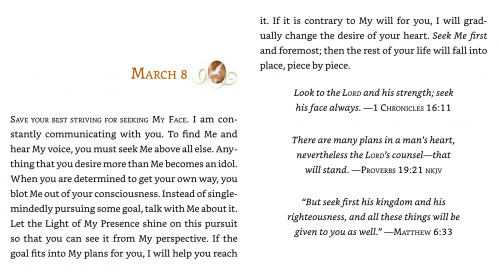What some call “liminal space” or threshold space (in Latin, limen means a threshold) is a very good phrase for those special times, events, and places that open us up to the sacred. It seems we need special (sacred) days to open us up to all days being special and sacred. This has always been the case and didn’t originate with Christianity. Ancient initiation rites were intensely sacred time and space that sent the initiate into a newly discovered sacred universe.
What became All Saints Day and All Souls Day (November 1–2) were already called “thin times” by the ancient Celts, as were February 1–2 (St. Bridget’s Day and Candlemas Day, when the candles were blessed and lit). The veil between this world and the next world was considered most “thin” and easily traversed during these times. On these days, we are invited to be aware of deep time—that is, past, present, and future time gathered into one especially holy moment. We are reminded that our ancestors are still in us and work with us and through us. We call it the “communion of saints.” The New Testament phrase for this was “when time came to a fullness,” as when Jesus first announces the Reign of God (Mark 1:15) or when Mary comes to the moment of birth (Luke 2:6). We are in liminal space whenever past, present, and future time come together in a full moment of readiness. We are in liminal space whenever the division between “right here” and “over there” is obliterated in our consciousness.
Deep time, or the communion of saints professed in Christian creeds, means that our goodness is not just our own, nor is our badness just our own. We are intrinsically social animals. We carry the lived and the unlived (and unhealed) lives of our parents, grandparents, and great-grandparents as far back as DNA and genomes can trace them—which is pretty far back. It does take a village to create a person. We are the very first generation to know that this is literally and genetically true. There is deep healing and understanding when we honor the full cycle of life. No wonder so many are intrigued today by genealogy searches and ancestry test kits. Many cry and laugh at their newly discovered place in a long family tree about which they knew little.
Living in the communion of saints means that we can take ourselves very seriously (we are part of a Great Whole) and not take ourselves too seriously at all (we are just a part of the Great Whole) at the very same time. I hope this frees us from any unnecessary individual guilt—and, more importantly, frees us to be full “partners in God’s triumphant parade” through time and history (2 Corinthians 2:14). We are in on the deal and, yes, the really Big Deal. We are all a very small part of a very Big Thing! We are little happy and content fish in a huge and limitless ocean.
A Community of Holy People
In the fourteenth century, the inspired, anonymous author of The Cloud of Unknowing taught that God in Christ dealt with sin, death, forgiveness, and salvation “all in one lump.” It is a most unusual, even homely, phrase; for me, this corporate and even mystical reading of divine history contributes toward the unitive vision so many of us are seeking. Jesus by himself entered history as an individual, albeit a divine individual, but the Universal Christ is a compelling image for this “one-lump” view of reality.
I think this collective notion is what Christians were trying to verbalize when they made a late addition (fifth century) to the ancient Apostles’ Creed: “I believe in the communion of saints.” They were offering us this new idea that the dead are at one with the living, whether they’re our direct ancestors, the saints in glory, or even the so-called souls in purgatory. The whole assembly is one, just at different stages, all of it loved corporately by God (and, one hopes, by us). Within this worldview, we are saved not by being privately perfect, but by being “part of the body,” humble links in the great chain of history. This view echoes the biblical concept of a covenant love that was granted to Israel as a whole, and never just to one individual like Abraham, Moses, or Esther. We are often too preoccupied with the “salvation of individuals” to read history in a corporate way, and the results have been disastrous. The isolated individual is now left fragile and defensive, adrift and alone, in a huge ocean of others who are also trying to save themselves—neither assisting nor relying on one another or the whole Body of Christ.
Theologian Elizabeth Johnson, a Sister of Saint Joseph, has worked for many years to redeem and expand the Catholic understanding of what exactly is meant by the “communion of saints.” She describes it as an “intergenerational community of the living and the dead stretching across time and space and comprised of all who are made holy by the Spirit of God.” [1] She writes:
In a physical and biological sense, interrelationship is not an appendage to the natural order but its very lifeblood. Everything is connected to everything else, and it all flourishes or withers together. . . .
Together the living form with the dead one community of memory and hope, a holy people touched with the fire of the Spirit, summoned to go forth as companions bringing the face of divine compassion into everyday life and the great struggles of history, wrestling with evil, and delighting even now when fragments of justice, peace, and healing gain however small a foothold. When they are seen together with the whole natural world as a dynamic, sacred community of the most amazing richness and complexity, then the symbol of the communion of saints reaches its fullness as a symbol of effective presence and action of Holy Wisdom herself. [2]
